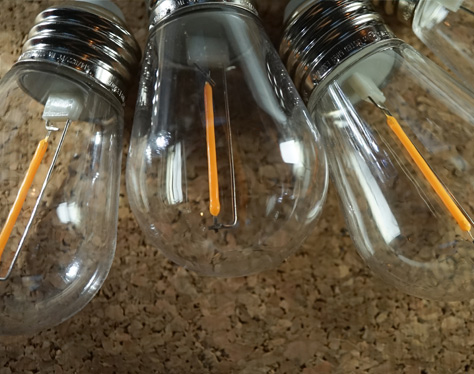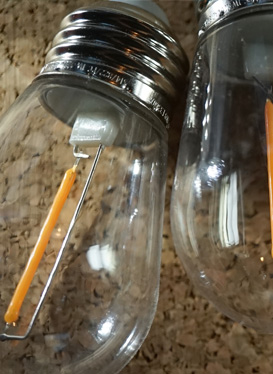While reliable light bulbs are essential to our everyday lives, it can feel like there are endless options to choose from. Whether you're shopping for a new replacement bulb or simply curious about the best type for your needs, understanding light bulb terminology is helpful for choosing the right light bulb.
So, when you find yourself asking “what kind of light bulb do I need?”, use this guide to explore light bulb size, bases, wattage and lumens, and make light bulb shopping easy.
Light Bulb Size
When you're shopping for a new light bulb, it's important to be sure it will fit in your fixture. Light bulb size is measured at the widest diameter of the bulb's shell. The measurement is in eighths of an inch, meaning that an A19 bulb is 19 eighths of an inch wide.
The other measurement to pay attention to is bulb height, which is measured in inches. If you're shopping for a replacement bulb, measure your fixture before buying or bring your old bulb into your local Batteries Plus location and one of our experts will be happy to help you find the right fit.
Bases
Light bulbs come in a variety of different bases, from everyday designs to niche styles that fit into specific appliances. These are a few of the most common light bulb bases:
- Screw base (standard base often found on LED, halogen, incandescent, and some fluorescent bulbs)
- Pin base (common on many fluorescent light tubes)
- Twist and lock base
- Plug-in base
- Miniature and automotive base
While there are other light bulb bases, these are the most common base types you'll find for home and electronic needs. Within each of these categories, there are different sizes and styles to fit specific appliance models.
Wattage and Lumens
Once you've found the right bulb size and base, it's time to explore energy and brightness.
Wattage measures the amount of energy that a light bulb uses – the lower the watts, the less energy it needs to operate.
However, more energy doesn't always mean a brighter bulb. Brightness is measured in lumens – higher lumens means a brighter light.
What Kind of Light Bulb Do I Need?
How to pick the right light bulb depends upon the specifications of your fixture as well as your personal lighting preferences. Your fixture or appliance will tell you the size and base of the light bulb you need and possibly a specific type of bulb. If your fixture allows you to use multiple types, the choice is up to you.
If you want to reduce your energy bill, look for light bulbs with lower wattage to save power. Standard incandescent bulbs usually need a higher wattage to produce higher lumens while halogen and CFL bulbs can deliver the same lumens at a lower wattage. LED bulbs are generally considered to be the most efficient choice and offer the lowest wattage for the same brightness.
No matter what kind of bulb you prefer, Batteries Plus offers a wide selection of light bulbs to suit all your needs. Explore a range of sizes, bases, watts and lumens to fit your appliances, or ask one of our experts for help on how to choose the right light bulb for you.

